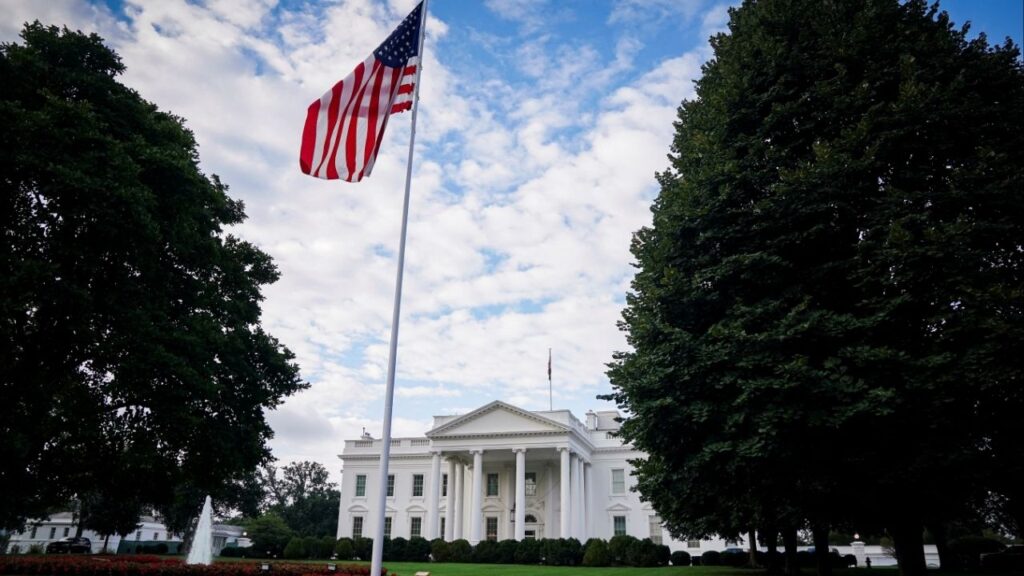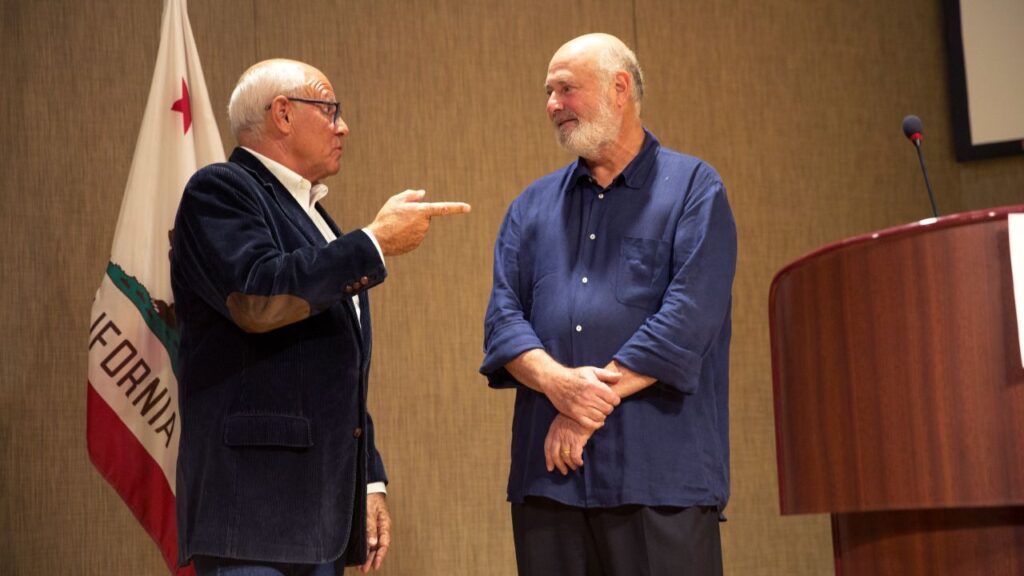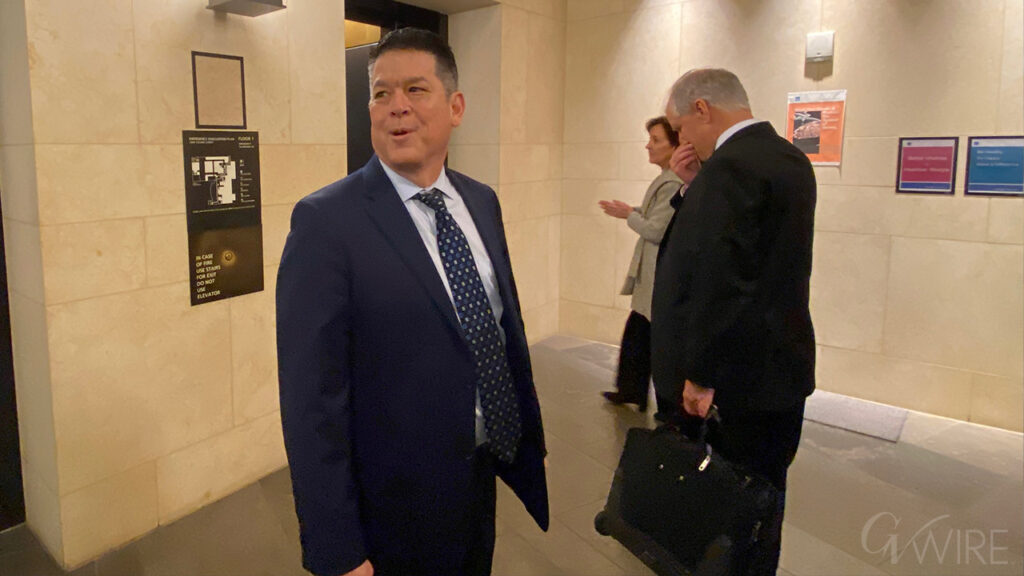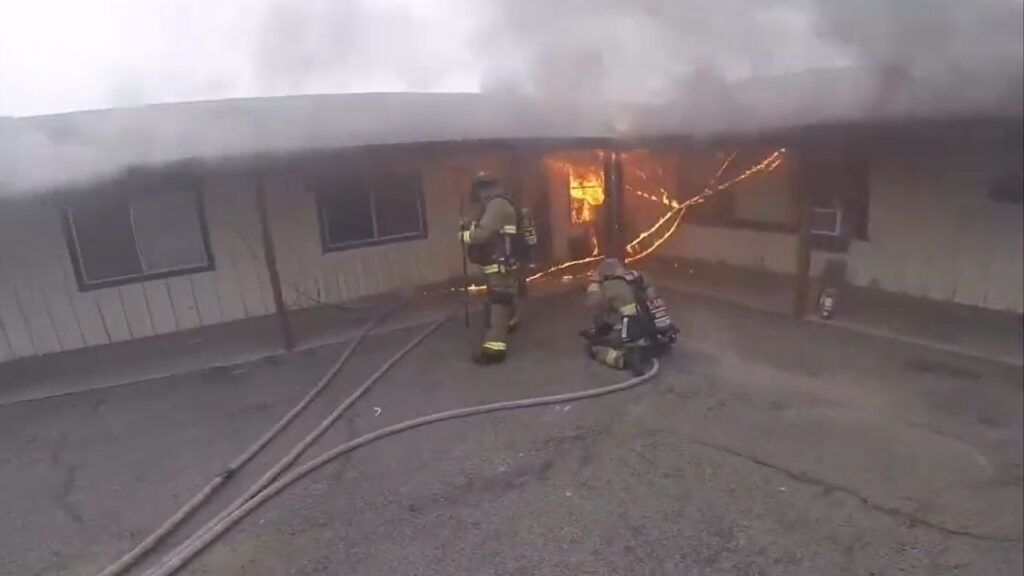A coyote on a footpath near a home in San Francisco, Jan. 10, 2024. Dozens of coyotes live in San Francisco, with small packs controlling specific territories like mob families. (The New York Times/Loren Elliott)

- Coyotes can be found all over San Francisco, and the tension with residents is growing.
- However, some people adore them, and coyote mania has seeped into the city’s culture.
- Their numbers in the city reached about 100, or roughly two per square mile, several years ago and have held steady since
Share
|
Getting your Trinity Audio player ready...
|
SAN FRANCISCO — They walk along busy San Francisco streets. In Chinatown plazas. Across the paths of Muni buses.
One was found dozing in a laundromat.
Coyotes can sometimes be seen roaming in cities around the country, including Chicago and New York. But in San Francisco, they have become ubiquitous, and the tension between humans and coyotes is growing.
Some people adore them, and coyote mania has seeped into the city’s quirky culture. Others despise them and have called for their eradication, especially after one lunged at children and killed small dogs. Many people simply wonder where they all came from in the first place.
Dozens of coyotes live in San Francisco, with small packs controlling specific territories like mob families. Golden Gate Park is home to two clans, with the 19th Avenue thoroughfare apparently serving as their dividing line. Other coyotes lay claim to parks, canyons, hills and golf courses that dot the urban landscape.
OpenAI CEO Sam Altman said a coyote had settled into the backyard of his mansion and lounged on his patio furniture. San Francisco 49ers quarterback Brock Purdy was filming a John Deere commercial in the city last year when he spotted a woman walking with her child and dog, unaware that a coyote was trailing them.
“I screamed, ‘Yo, there is a coyote!’” Purdy recalled later on ESPN. “That thing went running off.”
How Did They Return?
It was not always like this.
Coyotes are native to California and were widespread in San Francisco in the early 1900s, but residents considered them a part of the Wild West that needed to be removed. They vanished after a government-sponsored campaign that encouraged residents to poison or shoot the animals.
More than 75 years passed before coyotes reemerged in the city in the early 2000s. It is unclear how or why they returned, but blood samples point to a fascinating theory.
San Francisco is surrounded on three sides by water, so one might assume that the coyotes returned through the fourth side, by way of the southern hills that run down the spine of the peninsula toward Silicon Valley.
But scientists found that the DNA of the first arrivals did not match that of coyotes to the south. Instead, it matched the DNA of coyotes found to the north, beyond the strait and bay that separate the city from Marin County.
“Did they walk over the Golden Gate Bridge?” asked Christine Wilkinson, a carnivore ecologist at the University of California, Santa Cruz. “That’s my top theory.”
Once the first coyotes returned to the city, she said, they probably howled to attract others to follow.
“Coyotes will be where they want to be,” Wilkinson said.
Two Coyotes Per Square Mile in SF
Their numbers in the city reached about 100, or roughly two per square mile, several years ago and have held steady since. People began to notice them more often during the pandemic lockdown, and suddenly, it seemed as if the coyotes were everywhere.
The animals are depicted in several murals around the city. The San Francisco Standard, a local news site, included coyotes alongside Stephen Curry and Mark Zuckerberg in its new list of the city’s power players.
Janet Kessler, a self-taught advocate known as “the Coyote Lady,” regularly gives talks about the animals to packed audiences at local libraries, and she is convinced that most San Franciscans are awed by the creatures.
“I talk to a lot of people in the parks,” she said, “and 95% are thrilled at seeing the coyotes.”
But the coyotes’ encroachment on city living has angered some residents.
At a summer camp held near a coyote den in Golden Gate Park last year, an animal bit a 5-year-old on her backside, forcing her to get stitches. In response, federal agents shot three coyotes in one family there.
Elsewhere, some neighbors were furious when athletic fields and a dog park temporarily closed because coyotes were roaming on them.
But the most outrage came from people at Crissy Field, a popular bayside beach and park, who made up to 10 reports a day of a very aggressive coyote.

On the Hunt
On an unusually warm night in October, a small crew of scientists and federal agents stood at San Francisco’s northern edge, straining to find their target.
The Golden Gate Bridge stood to their left. Alcatraz to their right. Carrying a .22-caliber rifle with a silencer and peering through thermal scopes and binoculars, the agents eyed raccoons foraging in the marsh, geese migrating across the bay and barn owls flying over Crissy Field.
The team’s mark, however, remained elusive. They were after a male coyote, a yearling who had grown far too bold. He had killed at least three small dogs and lunged at children on a school outing.
The hunters were determined to make this night his last, but the apex predator had other ideas.
Generally speaking, the problem, scientists say, is not the coyotes of San Francisco. It is the humans.
Fishermen leave bait on piers, and picnickers leave scraps in parks. Trash cans spill over with detritus that the coyotes relish. Over time, the coyotes have come to associate humans with food.
Another problem, scientists say, is that people let their small dogs off leash even in known coyote territory.
Christopher Schell, an assistant professor and urban ecologist who runs a lab studying city-dwelling carnivores at the University of California, Berkeley, said that San Francisco would be far worse off without coyotes.
“They keep the rest of the ecosystem in check,” he said.
Without them, rats and the diseases they carry would surge, Schell said. They also help control the feral cat population, protecting birds, reptiles and insects.
But coexisting can be difficult. San Francisco’s Animal Care and Control was besieged with calls about the dangerous encounters with the problematic Crissy Field animal.
That coyote still haunts Michelle Sheppard, a longtime city resident and nurse at the University of California, San Francisco.
She was walking Poseidon, her 8-pound puppy, in late September. She let him roam free at the beach, where off-leash dogs are allowed, but made sure he was close by.
“All of a sudden I hear a yelp. I turned around, and a coyote had him in his mouth,” she recalled.
“I was screaming like a crazy lady,” she said. “‘A coyote just took my dog!’”
She dashed after the coyote and finally caught up to him. It was far too late. Poseidon died soon after.
‘It’s not the Coyote’s Fault’
Back on that October night, the hunters’ goal was to kill the dangerous coyote and then preserve his brain to determine whether he had suffered from any diseases that might have explained his aggression. Killing small dogs was considered normal behavior for coyotes, but when this animal lunged at children, local and federal agencies agreed he must be shot.
After searching for two nights, they finally found him in their scopes.
A federal agent hoisted a rifle, aimed for the coyote’s heart and fired. The bullet struck his lung.
The coyote darted off, wounded.
The team looked for him for hours until they detected heat amid trees in a nearby forest. He had finally died, a year and a half after he was born in a thicket at the Presidio Golf Course.
Phoebe Parker-Shames, a wildlife ecologist who joined the hunters both nights, said she saw the killing as a failure of the public to be good stewards of the land and of the government to better educate people about living with coyotes.
Many residents overreact to the normal behavior of “escorting” — steering humans away from dens with pups inside. Debates have become heated on social media.
Since the October killing, reports of aggressive interactions between coyotes and dogs at Crissy Field have waned.
Parker-Shames and other Presidio workers gathered at the beach for a memorial service for the coyote. She read a poem. A gardener sang an old country song called “Coyotes,” in which the chorus consists of coyotes yipping. The group spread flowers.
Parker-Shames intended to send the coyote’s body to a lab for a necropsy, but coordination with the lab has been delayed because of President Donald Trump’s firings of federal workers in the National Park Service.
The corpse remains in a plastic bag in a basement freezer. She removed the body on a recent day to pick whiskers and an ear snip for research.
“It was hard for all of us because it’s not the coyote’s fault,” she said, wiping away tears.
This article originally appeared in The New York Times.
By Heather Knight and Loren Elliott
c.2025 The New York Times Company
RELATED TOPICS:
Categories

Clovis Police Seek Suspect in Early-Morning Mail Theft

US Sends Cubans to Naval Station at Guantanamo Bay, NYT Reports
















